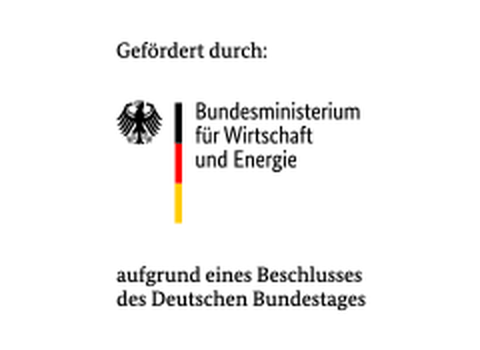Sensorgerechte Aktorkonstruktion
Aufgabe/Zielsetzung
Für stetig steigende Anforderungen wie Sicherheit und Funktionalität rückt die sensorische Erfassung von charakteristischen Ventilgrößen zunehmend in den Fokus. Mit einer Positionsbeobachtung kann nur durch Strom- und Spannungsmessung über die inhärenten Zusammenhänge die Ankerposition bestimmt werden. Da derzeitige Elektromagneten vorrangig für die Aktorfunktionalität ausgelegt sind, gibt es Defizite bei der Positionsbeobachtung durch den Einfluss nichtlinearer Effekte, die zu einer uneindeutigen Positionsbestimmung führen. Das Ziel des Vorhabens ist die Verbesserung der sensorischen Eigenschaften von elektromagnetischen Ventilaktoren durch gezielte Anpassung von Magnetgestaltung und Ansteuerung, um den Arbeitsbereich bzw. die Genauigkeit der Positionsbeobachtung zu erhöhen.
Lösungsweg
Anhand von zwei Beispielaktoren werden die inhärenten Zusammenhänge insbesondere unter dem Einfluss nichtlinearer Effekte mit Hilfe von FEM-Simulationen untersucht.
Potentielle Schwachstellen werden aufgezeigt und Lösungen für ein verbessertes
Verhalten erarbeitet. Dazu werden die Aktorgeometrie, das Magnetmaterial und die
Ansteuerung variiert.
Ausgehend von der Analyse und dem aufgezeigten Verbesserungspotential wird eine
Lösung entwickelt, die eine verbesserte Sensorfähigkeit aufweist, aber auch die Aktorfunktionalität erhält. Diese wird als Demonstrator aufgebaut, um das Potential praktisch nachzuweisen. Darüber hinaus werden die Ansteuer- und Auswerte-algorithmen mit dem Fokus einer praxistauglichen Nutzung weiterentwickelt.

Projektübersicht
Das IGF-Vorhaben 19093 BR/1 der Forschungsvereinigung Forschungskuratorium Maschinenbau e. V. – FKM, Lyoner Straße 18, 60528 Frankfurt am Main wurde über die AiF im Rahmen des Programms zur Förderung der industriellen Gemeinschaftsforschung (IGF) vom Bundesministerium für Wirtschaft und Energie aufgrund eines Beschlusses des Deutschen Bundestages gefördert.

